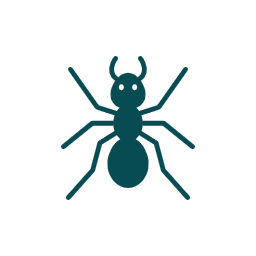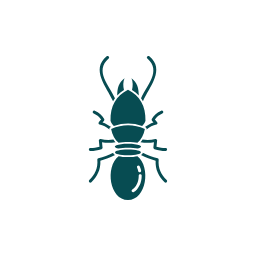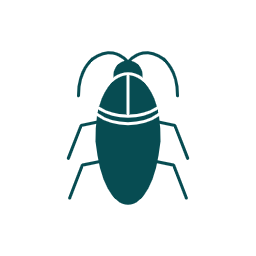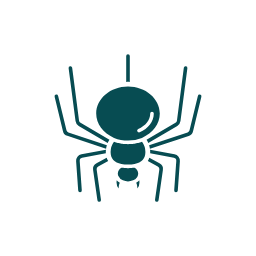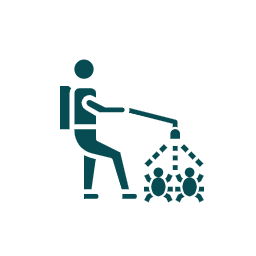Fleas are tiny, yet mighty. Whether you want to steer clear of flea problems in the future or you are struggling with existing fleas already, who have turned your life picture upside down, here you will find everything you need!
Why read this? Here’s why you should kill fleas in the house, not just to avoid some mild discomfort but to protect your family and pets from a health crisis. They’ll start breeding once they get in your house, prompting itching, annoyance and in some cases, allergies. If you’re ready to stay ahead of an infestation and learn about how to get rid of fleas, you need to understand fleas, you need to understand the flea life cycle, and you need to implement proven control methods that work.
We’re going to scratch the itchy truth about fleas — and how to keep a leap ahead of them.
The Basics: What Is a Flea, and Why Are They a Problem?
Fleas are tiny, wingless insects that feed on the blood of animals and people. You find them in homes, in yards and most of all on your cat and dog. While being a bit of a “pest for pets,” fleas can certainly bite humans when there is a flea infestation present.
Humdrum fleas are tiny; most are under 2.5mm long, but don’t be misled. A single adult female flea can lay up to 50 eggs in your dog’s “belly fur” every day, and you’ll quickly find yourself with a family of fleas on your hands. And at their worst, fleas can spread diseases such as tapeworm and, in rare cases, infections carried by wild rodents to humans.
They’re prevalent in tropical climates and can survive without a blood meal for long periods. That’s right — it turns out adult fleas have been found to survive in slumber for up to two months, and all they need is to be in close range of a warm body to wake up and start feeding all over again.
How Do Fleas Come Into Your Home?
There are a few ways fleas arrive in a home. The probable route was through your pet. Fleas don’t have wings, but they are good jumpers. They are able to jump 2 feet, so if your cat or dog hangs around in a yard that is flea-infested or meets another animal that bears some on himself, then it’s not hard to get one to jump on your home pet.
But it’s not just about pets. It can come in on your clothes, through cracks in the wall, or hitch a ride on rodents or wildlife. Once inside, the fleas will hop around, and the creature will start biting you, the pet, the dog, or whatever you have. And if you have a nice place with plenty of holes like your bed, rugs, bedding and furniture, they can easily go in and lay eggs.
A vacant house can also be a site of abrupt infection. Vibrations caused by footsteps stimulate the fleas; the buck fleas emerge from the pupae. So even if you won’t be there that long, don’t start feeling secure. Perform due diligence.
Reach out to us to inspect your property for fleas today.
Signs of a Flea Infestation in the Home
Well, how can you tell whether or not you may have fleas? Here are a few indications that you might be dealing with a flea infestation:
- Your pet has an itch or is over-grooming.
- You see little black fleas jumping on the couch or carpeting.
- You have red, itchy bites on your ankles, legs or stomach.
- Visible flea dirt (black specks) on your pet’s skin or bedding (and maybe your bedding too).
Flea bites are so itchy, and some people and pets are allergic to flea saliva. Flea Allergy Dermatitis is a really common allergic reaction in pets that have fleas, and it can make you scratch so much that you pull out your hair and get open sores.
If your animal is scratching itself — or you are being eaten alive by itchy bug bites — it’s time to start looking for flea pest control right away.
The Flea Life Cycle to Break It
To get rid of fleas, the first thing you must know is the flea life cycle: egg, larva, pupa, and adult flea.
When it feeds, a female flea deposits flea eggs, which fall from your pet and hide in your home. They hatch into flea larvae, who shun the light and crawl into carpets and crevices. They live by consuming organic material such as coagulated blood and flea faeces.
They create cocoons and, when they feel heat or vibration, become adult fleas. Fleas in every stage of their life cycle can lurk in your home — under the furniture, in bedding or deep in the carpet — so you can’t just give your pet a spray in the hopes of keeping the bugs at bay.
And as if that wasn’t enough, it is well documented that fleas hatch in your home long before you notice and decide to do something about it, and fleas can reproduce faster than the speed of light. You want to time your treatments around this cycle to ensure you’re killing fleas at all stages — from eggs to adults.
Flea Bites and Their Impact on Humans and Pets
Flea bites are small and red and cause intense itching. Flea bites are also annoying to those that have a condition that makes them annoying for days on end, if you’re simply annoyed by them. In pets, it’s even worse — flea saliva includes anticoagulants that can trigger an allergic reaction.
A less robust dog or cat may develop flea allergy dermatitis, which is where they are itchy, get skin infections and lose hair. You might notice your animal licking or chewing its paws, scratching its neck, scabbing on its back, etc.
Never treat a flea-infested pet at the same time, as the pet may have to scratch, and compulsive itching can result in no small amount of scratching and biting – hair loss, as well as an increasing host of other health issues. And if you’ve been noticing a few extra bites on yourself after reclining on the couch or lounging in bed — well, then you need to deal with not just your pet but your entire home.
Treating a Flea Infestation
If you’ve discovered a flea infestation, the first thing you should do is treat your pet. Employ vet-approved flea treatments for pets. These might be oral meds, topical spot-ons, or flea and tick collars. NEVER use dogs’ and cats’ treatments interchangeably, as their products are species-related.
Third, you have to treat your home. That includes vacuuming well — under furniture, along baseboards, and in corners where fleas like to hide. Once you have vacuumed, seal the vacuum bag and take it outdoors.
You also won’t be able to eliminate a flea infestation without cleaning all bedding, rugs and linens in hot water and killing the fleas in your dryer with high heat. You can also tread on them, sprinkle them with some sort of acid-like powder such as salt or baking soda, or use an insecticide that is safe for indoor use and won’t expose your pet to something toxic.
Professional extermination may be the best flea control tactic for chronic issues. Professionals have the resources to kill fleas — in all their life stages, from those pesky flea larvae lurking on your carpet to adult fleas hiding in cracks.
Flea Prevention
Prevent flea issues before they become a full-blown infestation. Fleas flourish in shady and damp outdoor areas, so begin treating those as well as your home.
Keep your grass mowed and organic debris cleared so that fleas don’t have a place to live. You can apply yard-safe insecticide treatments or beneficial nematodes for flea larvae in the soil.
Indoors, get in the habit of regularly vacuuming, and don’t skimp on flea prevention treatments for your pets because year-round recommendations are based on pet lifestyles and local conditions. Wash their bed linens once a week and pay attention to any scratching or shifting.
To really prevent a flea infestation, you have to tackle your pet, your home and your yard at the same time. And keep in mind, when you take your pet to the park or anyplace there are animals, it can pick up fleas.
Choosing the Right Flea Control Products for Your Pets
As it turns out, not all flea treatments for pets are the same. The ideal product will differ according to the kind of flea and your pet’s age and health. There is a difference between cat flea and dog flea products — if you use the wrong product on your pet, it could injure your pet.
Some will only kill the adult fleas, while others interfere with the life cycle by sterilising flea eggs and larvae. Consult your veterinarian about the best options, and consider fast-acting formulas that also have staying power.
Topical spot-on treatments, medicated flea collars and oral medications are some of the most frequently used, but if your pet has irritated skin already, you may require a separate flea treatment designed to help soothe inflammation and end itching.
How Pest2Kill Can Help You Remove Fleas from Your Home for Good
It’s overwhelming to deal with fleas on your dog or in your carpet or jumping through your home. But there’s no need for you to fight this battle by yourself. Here at Pest2Kill, we are masters at dealing with fleas and dealing with them fast!
Our professionals offer a customised flea treatment plan depending on the structure of your home, the extent of infestation, and possible location of the source of the flea infestation. All of our treatments are mild yet effective on fleas at any stage, from egg to adult flea, so not only will you get respite but also results you can see.
Final Thoughts: Don’t Let Fleas Win
Fleas can multiply quickly and find hidden places you’d never suspect. That’s why flea prevention, early detection, and all-encompassing flea control options are essential.
Here’s what to remember:
- Frequently check your pet for flea bites and fleas.
- Address both your pet and your home to ensure the problem is gone for good.
- Wash bedding, vacuum diligently and get a vet-approved flea treatment.
- Outdoor control matters, too—keep your home and yard clean and flea-free.
- And for all else, bring in the pros.
Looking for a quick way to kill fleas? Don’t let fleas rule your home. If you would like help from a professional or would like peace of mind, then contact Pest2Kill today. We will assist you in eliminating fleas, bringing back the comfort, and ensuring they never return.
FAQS
How do I get rid of fleas if I keep finding them weeks after treatment?
Fleas are stubborn parasites that can reappear due to missed eggs or adult fleas that were lying dormant. It’s important to use a flea treatment that targets every stage of the flea life cycle—eggs, larvae, pupae, and adults. Even after cleaning, adult fleas may still emerge if conditions remain favourable. To get fleas out of your home completely, re-treat your home and pet at proper intervals, and vacuum daily for at least 2 weeks to catch fleas before they reproduce again.
What can I do to prevent flea infestations in the future?
To prevent flea outbreaks, maintain regular cleaning routines and use a flea preventative treatment on pets year-round. Make sure your home and yard don’t become an environment for fleas—keep grass trimmed, remove debris, and block access points for wild animals. Remember, getting fleas is often as simple as your pet picking them up from a walk or another animal. So, always check for fleas on your pet after outdoor play or visits to pet parks.
What’s the best flea treatment option if I have both pets and kids?
For households with kids and pets, go with a flea treatment that’s safe, vet-approved, and preferably non-toxic. Topical treatments, oral medications, or flea collars may be used based on your vet’s advice. You should also use a flea spray for carpets and upholstery to kill remaining pests. Since flea saliva contains anticoagulants, bites may cause irritation or allergic reactions in children and animals alike. Treat your pet and your home at the same time to get rid of a flea infestation completely.
Why do I still have fleas in your home even if my pet is clean?
If you see fleas in your home, even when your pet appears flea-free, it’s likely due to fleas also hiding in carpets, furniture, or cracks in the floor. A single infected flea can lay dozens of eggs in just one day, and adult fleas can survive in protected spots for weeks. The species of fleas in your home may even wait for ideal conditions to emerge. Regular cleaning, vacuuming, and treating your home’s interior are critical to eliminating all traces of infestation.
What are the most effective methods for controlling fleas outdoors?
To effectively start controlling fleas outdoors, eliminate the environment for fleas: remove organic debris, mow the lawn frequently, and keep garbage sealed. You can use a flea spray formulated for outdoor use around shaded areas and under decks, where fleas also like to hide. Be mindful that fleas are also often introduced by wildlife—limit access from stray animals or rodents that might carry fleas into your backyard.
Can my cat and dog be allergic to flea bites?
Absolutely. Both your cat and dog can suffer from flea allergy dermatitis, a skin condition caused by sensitivity to flea saliva. Symptoms include excessive itching, hair loss, and red, inflamed skin. If your pet is irritated by flea bites, they may scratch excessively, potentially leading to infections. Even one infected flea can cause a reaction in allergic pets, so year-round flea treatments for pets are essential to keep them symptom-free and healthy.
What is the hardest type of flea to eliminate from a house?
The most persistent type of flea in homes is typically the cat flea, which ironically infests both dogs and cats. These species of fleas are highly adaptable and can live in carpets, bedding, and floorboards. Adult fleas can survive for weeks without a host, especially in a house for fleas that’s been vacant—such as a rental property or holiday home. If you’re entering a house that’s been closed for some time, flea eggs may hatch and quickly lead to a new infestation.


